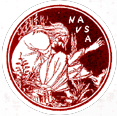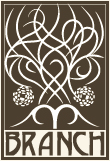Members' Book Announcements (Summer 2012)
Sanitary Reform in Victorian Britain, Part 1 Michelle Allen-Emerson, Christopher Hamlin, Tina Young Choi (Volume Editors) Sanitary reform was one of the great debates of the nineteenth century. This six volume edition, published in two parts, makes available for the first time a modern, edited collection of rare nineteenth-century documents specifically addressing sanitary reform. The collection includes material on Glasgow, Edinburgh, Manchester, Dublin, and London, giving a nationwide perspective on the conditions of British urban life. Moreover, it covers the diverse range of projects pursued in the name of urban sanitation, including burial reform, sewerage, water supply, public baths, housing, and inspection. The material on these and other initiatives reflects the views of the many interest groups involved, from medicine and engineering to philanthropy, politics, and the Church. This unique resource is an invaluable tool for researchers of the History of Science and Medicine and Victorian Studies. |
 Buy at Pickering Chatto |
Victorian Jewelry, Identity, and the Novel: Prisms of Culture Jean Arnold In this study of Victorian jewels and their representation, Jean Arnold explores the role material objects play in the cultural cohesion of the West. Diamonds and other gems, Arnold argues, symbolized the most closely held beliefs of the Victorians and thus can be considered "prisms of culture." Mined in the far reaches of the empire, they traversed geographical space and cultural boundaries, representing monetary value and evoking empire, class lineage, class membership, gender relations, and aesthetics. Arnold analyzes the many roles material objects fill in Western culture and surveys the cross-cultural history of the Victorian diamond, uncovering how this object became both preeminent and representative of Victorian values. Her close readings of Wilkie Collins's The Moonstone, George Eliot's Middlemarch, William Makepeace Thackeray's The Great Hoggarty Diamond, and Anthony Trollope's The Eustace Diamonds show gendered, aesthetic, economic, fetishistic, colonial, legal, and culturally symbolic interpretations of jewelry as they are enacted through narrative. Taken together, these divergent interpretations offer a holistic view of a material culture's affective attachment to objects. As the assigned meanings of jewels turn them into symbols of power, personal relationships, and valued ideas, human interactions with gems elicit emotional responses that bind the materialist culture together. |
 Buy on Amazon |
The Dream Life of Citizens: Late Victorian Novels and the Fantasy of the State Zarena Aslami It has become commonplace to claim that nations are constituted through the incitement of feelings and the operations of fantasy. But can we think of the state as a subject of feeling, as well? This study of late Victorian culture argues that novels certainly did. Revisiting major works by Olive Schreiner, Thomas Hardy, and George Gissing among others, it shows how novels dramatized the feelings and fantasies of a culture that was increasingly optimistic, as well as anxious, about the state’s capacity to “step in” and help its citizens achieve the good life. In particular, the book tracks the historical emergence of a fantasy of the state as a heroic actor with whom one has a relationship and from whom one desires something and argues that novels became a privileged site for meditating on its more tragic implications. The central tragedy arises from the painful condition of individuals’ imagining themselves to be independent of power-bearing institutions, yet knowing that they are not and may not even wish to be. The Dream Life of Citizens illuminates this enduring ambivalence at the heart of the liberal subject’s relationship to state power. |
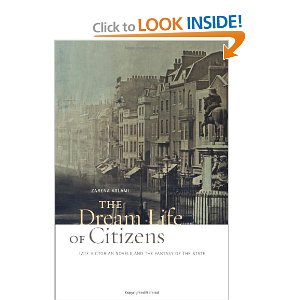 Buy on Amazon |
The Yellow Nineties Online. Peer-reviewed and federated with NINES, April 2012. Web. Editors: Dennis Denisoff and Lorraine Janzen Kooistra, eds. An avant-garde magazine innovative in both form and content, The Yellow Book was the defining document of the decade it coloured as "the yellow nineties" and remains central to the study of fin-de-siècle art, literature, and society. In response to issues of access to the periodical itself and the lack of a cohesive centre for aggregating scholarly commentary on The Yellow Book, editors Dennis Denisoff and Lorraine Janzen Kooistra have turned to digital technology. The Yellow Nineties Online places The Yellow Book in the context of related fin-de-siècle aesthetic periodicals and the transatlantic reviewing mechanisms they generated. The site gives immediate open access to historical documents, while preserving, in a regularly updated virtual form, periodicals in danger of disintegration due to their crumbling, pulp-based and chemical-bleached paper. Most importantly, The Yellow Nineties Online opens the pages of The Yellow Book and related periodicals to new forms of reading and analysis by bringing the visualization technologies of our digital age to bear on the material objects of fin-de-siècle print culture. In its current phase, all 13 volumes of The Yellow Book (1894-1897) are available in digitized form, and the first half of the print run has been fully edited. The single-volume Pagan Review (1892) has been included in this initial stage of site development because of its many connections to The Yellow Book, its extreme rarity (only two copies are known to be extant), and its expansion of the publishing context from urban London to rural Sussex. The digitization of these two periodicals and their respective paratextual materials allows users to juxtapose key print documents of the aesthetic and decadent movements with those coming out of the Celtic Revival and neo-paganism. Denisoff and Janzen Kooistra provide introductory essays for each individual volume as well as scholarly overviews of each magazine as whole. Their editorial theory of text as socially and collaboratively produced is made explicit in the Biographies section of the site. Here users can access scholarly biographies on contributors to the periodicals published as well as other individuals who made significant contributions to the 1890s in the areas of culture, literature, visual art, book-design, publishing, and technological innovation. In a series of meta-critical essays, the research team reflects on the process of building The Yellow Nineties Online and on the relationships between fin-de-siècle periodicals and twenty-first century digital projects, both produced collaboratively and serially, with a fixed starting point but a theoretically continuous life span. All documents on The Yellow Nineties Online are marked-up and fully searchable, and the site has been peer-reviewed and federated by the Networked Interface of Nineteenth-Century Electronic Scholarship (NINES). |
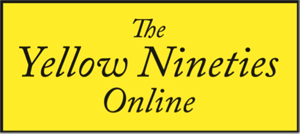 Visit Website |
BRANCH: Britain, Representation, and Nineteenth-Century History, 1775-1925 Editor: Dino Franco Felluga This site, an extension of Romanticism and Victorianism on the Net, provides users with a free, expansive, searchable, reliable, peer-reviewed, copy-edited, easy-to-use overview of the period 1775-1925. Unlike dry chronologies that simply list dates with minimal information about the many noteworthy events of a given year, BRANCH offers a compilation of a myriad of short articles on not only high politics and military history but also “low” or quotidian histories (architecture design, commercial history, marginal figures of note, and so on). Since no one scholar could hope to provide a complete overview of an entire century of British society, I have compiled material from a host of scholars working on all facets of the British nineteenth century. Authors come from History, Art History, and English departments across the world. The site differs from wikipedia in so far as all articles have undergone peer review, copy-editing, and proofing. Each article also seeks to interpret the events being discussed. Indeed, many events are discussed by more than one scholar. Thanks to its site structure, BRANCH offers users an innovative approach to history itself, suggesting that any given bit of historical information can branch outward in often surprising directions. Rather than provide a linear timeline of history from the perspective of the victors, I wish to provide a history that comes closer to what Walter Benjamin famously termed jetztzeit or “the time of the now,” an impacted history that explores the messy uncertainties and possibilities of any given historical moment. |
|
The Narrative of Arthur Gordon Pym of Nantucket Editors: Frederick S. Frank and Diane Long Hoeveler Edgar Allan Poe's only long fiction has provoked intense scholarly discussions about its meaning since its first publication. The novel relates the adventures of Pym after he stows away on a whaling ship, where he endures starvation, encounters with cannibals, a whirlpool, and finally a journey to an Antarctic sea. It draws on the conventions of travel writing and science fiction, and on Poe's own experiences at sea, but is ultimately in a category of its own. Appendices include virtually all of the contemporary sources of exploration and south polar navigation that Poe consulted and adapted to the narrative, together with reviews and notices of Pym and a sampling of responses to the novel from a wide array of authors, from Herman Melville and Charles Baudelaire to H.P. Lovecraft and Toni Morrison. Seven illustrations are also included. |
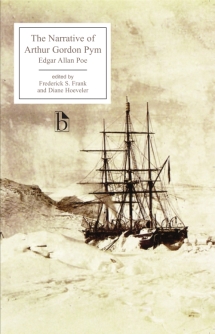 Buy at Broadview |
Nineteenth-Century Theatre and the Imperial Encounter Marty Gould In this study, Gould argues that it was in the imperial capital’s theatrical venues that the public was put into contact with the places and peoples of empire. Plays and similar forms of spectacle offered Victorian audiences the illusion of unmediated access to the imperial periphery; separated from the action by only the thin shadow of the proscenium arch, theatrical audiences observed cross-cultural contact in action. But without narrative direction of the sort found in novels and travelogues, theatregoers were left to their own interpretive devices, making imperial drama both a powerful and yet uncertain site for the transmission of official imperial ideologies. Nineteenth-century playwrights fed the public’s interest in Britain’s Empire by producing a wide variety of plays set in colonial locales: India, Australia, and—to a lesser extent—Africa. These plays recreated the battles that consolidated Britain’s hold on overseas territories, dramatically depicted western humanitarian intervention in indigenous cultural practices, celebrated images of imperial supremacy, and occasionally criticized the sexual and material excesses that accompanied the processes of empire-building. An active participant in the real-world drama of empire, the Victorian theatre produced popular images that reflected, interrogated, and reinforced imperial policy. Indeed, it was largely through plays and spectacles that the British public vicariously encountered the sights and sounds of the distant imperial periphery. Empire as it was seen on stage was empire as it was popularly known: the repetitions of character types, plot scenarios, and thematic concerns helped forge an idea of empire that, though largely imaginary, entertained, informed, and molded the theatre-going British public. |
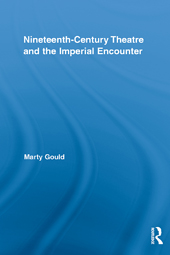 Buy on Amazon |
The Life of George Eliot Nancy Henry The life story of the Victorian novelist George Eliot is as dramatic and complex as her best plots. This new assessment of her life and work combines recent biographical research with penetrating literary criticism, resulting in revealing new interpretations of her literary work.
|
|
The Victorian World Martin Hewitt With an interdisciplinary approach that encompasses political history, the history of ideas, cultural history and art history, The Victorian World offers a sweeping survey of the world in the nineteenth century. This volume offers a fresh evaluation of Britain and its global presence in the years from the 1830s to the 1900s. It brings together scholars from history, literary studies, art history, historical geography, historical sociology, criminology, economics and the history of law, to explore more than 40 themes central to an understanding of the nature of Victorian society and culture, both in Britain and in the rest of the world. Organised around six core themes – the world order, economy and society, politics, knowledge and belief, and culture – The Victorian World offers thematic essays that consider the interplay of domestic and global dynamics in the formation of Victorian orthodoxies. A further section on ‘Varieties of Victorianism’ offers considerations of the production and reproduction of external versions of Victorian culture, in India, Africa, the United States, the settler colonies and Latin America. These thematic essays are supplemented by a substantial introductory essay, which offers a challenging alternative to traditional interpretations of the chronology and periodisation of the Victorian years. |
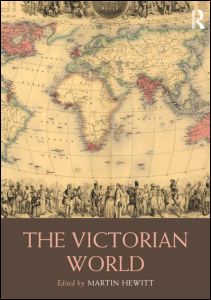 Buy at Routledge |
Gothic Riffs: Secularizing the Uncanny in the European Imaginary, 1780-1820 Diane Long Hoeveler Gothic Riffs: Secularizing the Uncanny in the European Imaginary, 1780–1820 by Diane Long Hoeveler provides the first comprehensive study of what are called “collateral gothic” genres—operas, ballads, chapbooks, dramas, and melodramas—that emerged out of the gothic novel tradition founded by Horace Walpole, Matthew Lewis, and Ann Radcliffe. The role of religion and its more popular manifestations, superstition and magic, in the daily lives of Western Europeans were effectively undercut by the forces of secularization that were gaining momentum on every front, particularly by 1800. It is clear, however, that the lower class and the emerging bourgeoisie were loath to discard their traditional beliefs. We can see their search for a sense of transcendent order and spiritual meaning in the continuing popularity of gothic performances that demonstrate that there was more than a residue of a religious calendar still operating in the public performative realm. Because this bourgeois culture could not turn away from God, it chose to be haunted, in its literature and drama, by God’s uncanny avatars: priests, corrupt monks, incestuous fathers, and uncles. The gothic aesthetic emerged during this period as an ideologically contradictory and complex discourse system; a secularizing of the uncanny; a way of alternately valorizing and at the same time slandering the realms of the supernatural, the sacred, the maternal, and the primitive. |
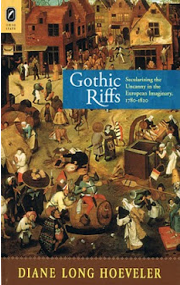 Buy on Amazon |
Economic Woman: Demand, Gender, and Narrative Closure in Eliot and Hardy Deanna K. Kreisel In Economic Woman, Deanna K. Kreisel shows how images of feminized sexuality in novels by George Eliot and Thomas Hardy reflected widespread contemporary anxieties about the growth of capitalism. Economic Woman is the first book to address directly the links between classical political economy and gender in the novel. Examining key works by Eliot and Hardy, including The Mill on the Floss and Tess of the d’Urbervilles, Kreisel investigates the meaning of two female representations: the ‘economic woman,’ who embodies idealized sexual restraint and wise domestic management, and the degraded prostitute, characterized by sexual excess and economic turmoil. Kreisel effectively integrates economic thought with literary analysis to contribute to an ongoing and lively scholarly discussion. |
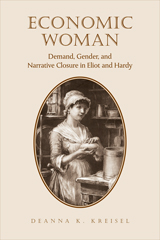 Buy on Amazon |
The Rise and Fall of Meter: Poetry and English National Culture, 1860-1930 Meredith Martin Why do we often teach English poetic meter by the Greek terms iamb and trochee? How is our understanding of English meter influenced by the history of England's sense of itself in the nineteenth century? Not an old-fashioned approach to poetry, but a dynamic, contested, and inherently nontraditional field, "English meter" concerned issues of personal and national identity, class, education, patriotism, militarism, and the development of English literature as a discipline. The Rise and Fall of Meter tells the unknown story of English meter from the late eighteenth century until just after World War I. Uncovering a vast and unexplored archive in the history of poetics, Meredith Martin shows that the history of prosody is tied to the ways Victorian England argued about its national identity. |
 Buy on Amazon |
Elizabeth Barrett Browning's Aurora Leigh: A Reading Guide Michele Martinez Elizabeth Barrett Browning’s Aurora Leigh: A Reading Guide introduces new readers and students to a celebrated and controversial Victorian novel-poem. Long extracts from the text are accompanied by fresh biographical and scholarly commentary. The text’s composition history, major influences, and modes of poetic expression are also generously discussed. Martinez guides readers through the poems major themes and contexts, introducing a range of interpretive frameworks. The teaching and bibliographic chapters offer supplementary materials for college or university instruction. |
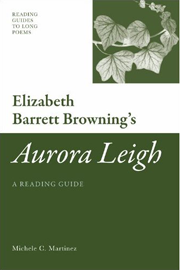 Buy on Amazon |
The Dispossessed State: Narratives of Ownership in Nineteenth-Century Britain and Ireland Sara L. Maurer This book connects the Victorian novel’s preoccupation with the landed estate to the nineteenth-century debates about property that characterized the English occupation of Ireland. Victorian writers on both sides of the Irish Sea were deeply attracted to the idea that the Irish had rights to their land that the state was powerless to give or take away. Analyzing this strain of thought through a century of British and Irish fiction, journalism, and political theory, Maurer suggests that the ownership of Irish land played a major role in how Victorians were able to imagine a political entity called the United Kingdom of Great Britain and Ireland. Bringing together canonical British novelists—Maria Edgeworth, Anthony Trollope, George Moore, and George Meredith—with the writings of major British political theorists—John Stuart Mill, Henry Sumner Maine, and William Gladstone—Maurer recovers the broad influence of Irish culture on the rest of the British Isles. |
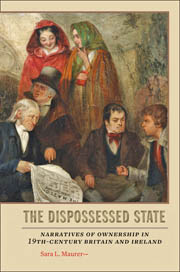 Buy on Amazon |
Slow Print: Literary Radicalism and Late Victorian Print Culture Elizabeth Carolyn Miller This book explores the literary culture of Britain's radical press from 1880 to 1910, a time that saw a flourishing of radical political activity as well as the emergence of a mass print industry. While Enlightenment radicals and their heirs had seen free print as an agent of revolutionary transformation, socialist, anarchist and other radicals of this later period suspected that a mass public could not exist outside the capitalist system. In response, they purposely reduced the scale of print by appealing to a small, counter-cultural audience. "Slow print," like "slow food" today, actively resisted industrial production and the commercialization of new domains of life. Drawing on under-studied periodicals and archives, this book uncovers a largely forgotten literary-political context. It looks at the extensive debate within the radical press over how to situate radical values within an evolving media ecology, debates that engaged some of the most famous writers of the era (William Morris and George Bernard Shaw), a host of lesser-known figures (theosophical socialist and birth control reformer Annie Besant, gay rights pioneer Edward Carpenter, and proto-modernist editor Alfred Orage), and countless anonymous others. |
 Buy at Stanford University Press |
Doctoring the Novel: Medicine and Quackery from Shelley to Doyle Sylvia A. Pamboukian If nineteenth-century Britain witnessed the rise of medical professionalism, it also witnessed rampant quackery. It is tempting to categorize historical practices as either orthodox or quack, but what did these terms really signify in medical and public circles at the time? How did they develop and evolve? What do they tell us about actual medical practices? Doctoring the Novel explores the ways in which language constructs and stabilizes these slippery terms by examining medical quackery and orthodoxy in works such as Mary Shelley’s Frankenstein, Charles Dickens’s Bleak House and Little Dorrit, Charlotte Brontë’s Villette, Wilkie Collins’s Armadale, and Arthur Conan Doyle’s Stark Munro Letters. Contextualized in both medical and popular publishing, literary analysis reveals that even supposedly medico-scientific concepts such as orthodoxy and quackery evolve not in elite laboratories and bourgeois medical societies but in the rough-and-tumble of the public sphere, a view that acknowledges the considerable, and often underrated, influence of language on medical practices. |
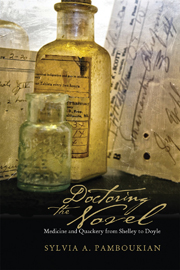 Buy on Amazon |
The Autobiography and Letters of Mrs M O W Oliphant. Editor: Linda H. Peterson, ed. In The Selected Works of Margaret Oliphant, ed. Joanne Shattock and Elisabeth Jay. Pickering & Chatto, 2012. This new scholarly edition reproduces the original 1899 Autobiography and Letters of Mrs M O W Oliphant, together with entries from her personal diaries for 1887, 1888 and 1896. It includes annotations of the full text, as well as textual variants from the original manuscript and for the second and third editions. The volume is part of a large editorial project on Oliphant’s works. Part I, “Literary Criticism and Literary History,” includes four volumes: Literary Criticism, 1854–69; Literary Criticism, 1870–76; Literary Criticism, 1877–86; and The Victorian Age of English Literature. In addition to the Autobiography, Part II, “Literary Criticism, Autobiography, Biography and Historical Writing,” includes Literary Criticism, 1887–97; Writings on Biography (2 vols.); and Historical Writing. For future volumes, see www.pickeringchatto.com/oliphant. |
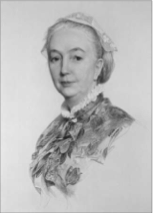 Visit Pickering & Chatto Website |
How to Do Things with Books in Victorian Britain Leah Price How to Do Things with Books in Victorian Britain asks how our culture came to frown on using books for any purpose other than reading. When did the coffee-table book become an object of scorn? Why did law courts forbid witnesses to kiss the bible? What made Victorian cartoonists mock commuters who hid behind the newspaper, ladies who matched their books’ binding to their dress, and servants who reduced newspapers to fish n’ chips wrap? Shedding new light on novels by Thackeray, Dickens, the Brontës, Trollope, and Collins, as well as the urban sociology of Henry Mayhew, Leah Price also uncovers the lives and afterlives of anonymous religious tracts and household manuals. From knickknacks to waste paper, books mattered to the Victorians in ways that can’t be explained by their printed content alone. And whether displayed, defaced, exchanged, or discarded, printed matter participated, and still participates, in a range of transactions that stretches far beyond reading. Supplementing close readings with an ethnography of how Victorians thought and felt about books, Price offers a new model for integrating literary theory with cultural history. How to Do Things with Books in Victorian England reshapes our understanding of the interplay between words and objects in the nineteenth century and beyond. |
 Buy on Amazon |
Giving Women: Alliance and Exchange in Victorian Culture Jill Rappoport Altruism and self-assertiveness went hand in hand for Victorian women. Gift transactions allowed them to enter into economic negotiations of power as volatile and potentially profitable as those within the markets that so frequently excluded or exploited them. They made presents of holiday books and homemade jams, transformed inheritances into intimate and aggressive bequests, and, in both prose and practice, offered up their own bodies in sacrifice. Far more than selfless acts of charity or signs of their suitability for marriage, such gifts radically reconstructed women’s personal relationships and public activism in the nineteenth century. Giving Women examines the literary expression and cultural consequences of English women’s giving from the 1820s to the First World War. In fiction and poetry by Brontë, Barrett Browning, Gaskell, and Rossetti , periodicals, and political pamphlets, Rappoport demonstrates how female authors and fictional protagonists alike mobilized networks outside of marriage and the market. Through giving, women redefined the primary allegiances of their everyday lives, forged public coalitions, and advanced campaigns for abolition, slum reform, eugenics, and suffrage. |
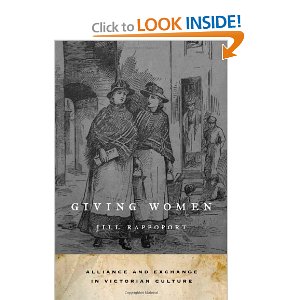 Buy on Amazon |
Julian Bell: From Bloomsbury to the Spanish Civil War Peter Stansky and William Abrahams Julian Bell explores the life of a younger member, and sole poet, of the Bloomsbury Group, the most important community of British writers and intellectuals in the twentieth century, which includes Virginia Woolf (Julian's aunt), E. M. Forster, the economist John Maynard Keynes, and the art critic Roger Fry. This biography draws upon the expanding archives on Bloomsbury to present Julian's life more completely and more personally than has been done previously. It is an intense and profound exploration of personal, sexual, intellectual, political, and literary life in England between the two world wars. Through Julian, the book provides important insights on Virginia Woolf, his mother Vanessa Bell, and other members of the Bloomsbury Group. Taking us from London to China to Spain during its civil war, the book is also the ultimately heartbreaking story of one young man's life. |
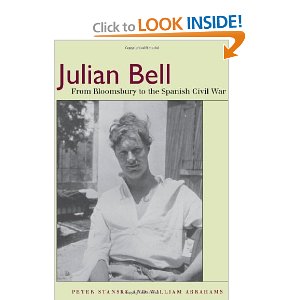 BUY |

